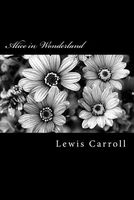

forged ahead with a new printer, Richard Clay, who reprinted the book to Tenniel’s satisfaction in November 1865. Only 23 copies of the rejected first printing with the original 1865 title page are known to have survived. Appleton in New York, who published them with a new title page dated 1866. Carroll sold most of these rejected copies to the firm of D. However, Tenniel was displeased with the clarity of the illustrations in the initial printing of 2,000 copies. to publish Alice’s Adventures in Wonderland, which he financed himself, using Oxford University’s Clarendon Press as the printer. By June of the next year, Tenniel had completed the 42 drawings that would appear in the final published book.Ĭarroll arranged with Macmillan and Co. On December 16, 1864, Tenniel sent Carroll the first 12 proofs for illustrations. The two worked closely together throughout the illustration process.

Tenniel was an established illustrator and a political cartoonist for the British humor magazine Punch. He approached John Tenniel to provide artwork for his reworked tale, now titled Alice’s Adventures in Wonderland. He had lent it to several people, including his friend Scottish author George MacDonald, whose 6-year-old son Greville exclaimed, “there ought to be sixty thousand volumes of it.”Ĭarroll realized that his own self-described “crude designs” were not artistic enough for a published book. By the time Lewis Carroll presented his manuscript of Alice’s Adventures Under Ground to Alice Liddell in November 1864, he had already begun expanding the story and removing some Oxford-specific references in order to publish it for a broader audience.


 0 kommentar(er)
0 kommentar(er)
